Until now, solar installers were left with less-than-perfect answers for this question. They could talk about how well a solar module responded to fire. They could talk about the flame-resistant properties of a mounting system. But none could cite laboratory tests for how a combined system—panels and mounting together—might respond to a building fire. The subject has received attention recently due to a few high-profile fires involving solar.
“If a roof with installed PV modules is exposed to a fire, will the solar array help or hinder the flames?”
Solar mounting systems are diverse in material and structure. They can change the way a rooftop fire burns. Research by UL, in collaboration with the Solar ABCs, confirmed the fire performance of a module alone is not a good indicator of the fire performance of a whole system.
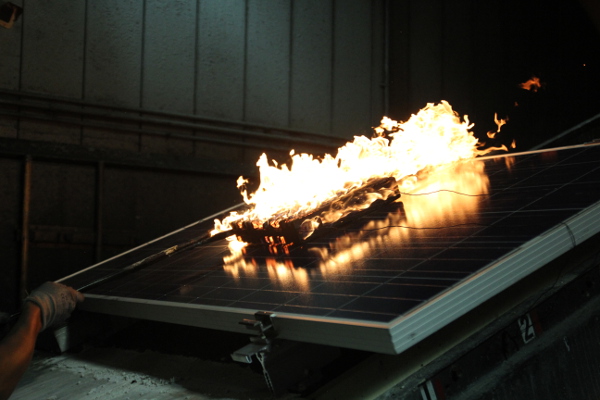 A solar panel on fire. Credit: Steven Bushong
A solar panel on fire. Credit: Steven Bushong
According to new language in the 2012 International Building Code, a solar PV system must be fire-rated at the same level or better than what is required for the building. So if a building is required to have a roofing system rated Class A for fire, then the solar system—modules and mounting rack together—should have the same certification.
As a result, experts developed new tests to determine fire classifications for rooftop PV systems—those installed on flat roofs with symmetrical or asymmetrical configurations, as well as installations on steep sloped roofs with asymmetric mounting. When tested, systems can achieve an A, B or C PV System Fire Classification rating.
While solar manufacturers look to the future to comply with 2016 IBC requirements that will be progressively adopted across jurisdictions, some key jurisdictions are moving more quickly. In these places, the authorities having jurisdiction, or AHJs—the local officials who permit and approve projects—will be enforcing new requirements sooner.
In fact, California started requiring Class A fire ratings for all systems on January 1, 2014. By February of that year, however, it became clear the solar industry wasn’t prepared to deliver enough tested systems to cover demand, and the state suspended the requirements for Class A and B systems until January 1, 2015. For buildings in California requiring only Class C roofs, the PV module-only rating of Class C will be accepted until October 25, 2016.
Since then, mounting manufacturers—especially those in the California market, which has the most Class A and B requirements—have been busy buying time in testing laboratories and getting products certified.
Recently, I traveled to Underwriters Laboratories—the global company behind the ubiquitous UL-in-a-circle logo that not only tests more than 20,000 products but also works with industries to develop the standards that make them safe—to see a PV system fire test first-hand. UL is one of about a dozen companies capable of testing solar equipment.
Others include TÜV Rheinland, DNV GL and Intertek.
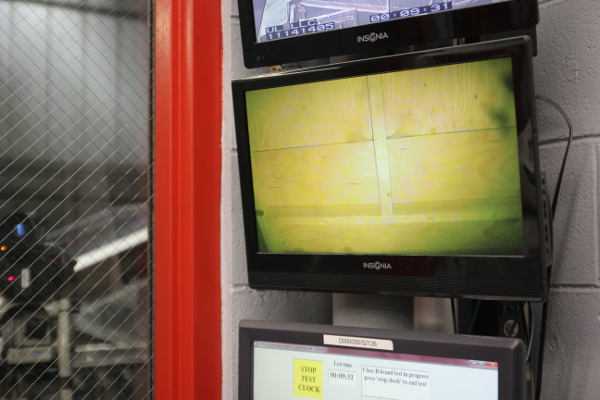 Because UL technicians can’t safely observe the underside of a roof deck during testing, a video camera is mounted beneath it, monitoring whether fire has breached the roof decking material. This television is mounted in the control room. Credit: Steven Bushong
Because UL technicians can’t safely observe the underside of a roof deck during testing, a video camera is mounted beneath it, monitoring whether fire has breached the roof decking material. This television is mounted in the control room. Credit: Steven Bushong
Visiting UL
The Underwriters Laboratories headquarters is located on a 100-acre campus in Northbrook, Ill., just north of Chicago. The main building holds corporate offices as well as chemical and electrical labs. Other buildings dot the campus, including one boxy structure that measures electromagnetic radiation from electrical devices and another with rooms large enough to hold two full-size houses.
In fact, it has, and then they were burned down, room by room, in the name of science. I was told by more than one person at UL that fire is “capricious,” and the company studies it extensively using computer modeling and highly monitored real-life tests, such as the one I came to witness.
A marketing specialist took me to a building in the back corner of the campus where they do much of the fire testing on commercial and industrial products, including bank safes, flooring, steel beams, doors and, yes, solar PV modules and systems.
On the outside, the building has large air-evacuation tubes, running from the rooftops, down the side of the building into a central area where dirty air is cleaned before it is released. UL is active in environmental safety, as well, noted because they burn a wide variety of toxic objects.
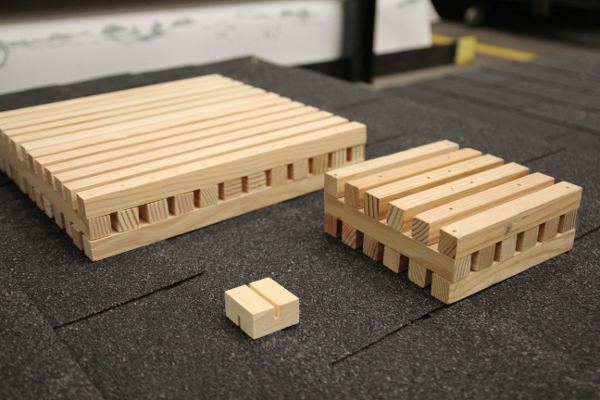 Calibrated brands are used in the “burning brand test.” Pictured are the A (12” x 12”), B (6” x 6”) and C (1 1/2” x 1 1/2”) brands. Brand selection for testing depends on the desired system rating. The brands are stored in a cabinet with controlled temperature and humidity. Humidity has a significant impact on how a brand will burn. To the right, UL consumer safety director John Drengenberg holds an A brand. Credit: Steven Bushong
Calibrated brands are used in the “burning brand test.” Pictured are the A (12” x 12”), B (6” x 6”) and C (1 1/2” x 1 1/2”) brands. Brand selection for testing depends on the desired system rating. The brands are stored in a cabinet with controlled temperature and humidity. Humidity has a significant impact on how a brand will burn. To the right, UL consumer safety director John Drengenberg holds an A brand. Credit: Steven Bushong
Equipped with goggles and a hard hat, I followed my guide down hallways and passed a room resembling a lumberyard where they build dozens of slabs of roof decking to precise specifications. I heard a lot about “precision” and “calibration” during the tour. Officials at UL show careful attention to detail to ensure that every test is identical. “Calibration is in our DNA,” one said.
We ended up inside the large building where UL does the majority of its fire testing.
Testing in process
The firing rooms are constantly occupied. Later, as I was leaving, representatives from a well-known panel manufacturer were about to set fire to a whole pallet of systems, one by one. They were scheduled to work until midnight.
The testing area is dark and grungy. Ash coats everything. The room smells like a campfire. Apparently, people have commented on its rough appearance because UL consumer safety director John Drengenberg chimed in before I said anything.
“This is a working lab,” he said.
A piece of machinery, black like its surroundings, looking a bit like a commercial oven, will spit fire where you might slide in a pizza. Attached was one of those roof decks I saw piled high a few hallways ago, angled at 22.5° (a “steep slope” test, compared to 2.4° for a “low slope” test). Typically, I’m told, three deck pieces are burned to establish control—more calibration.
As the calibration test began, fire crept over a hinge from a gas burner. At first, the asphalt shingles held up well. But about six minutes into the test, they started combusting. One by one, the shingles caught fire, and flames crept up the roof.
The test finished in 10 minutes. The technician extinguished the fire. The roof decking was lowered to the ground, and the burn marks were measured. If everything was consistent with previous tests, the next roof section acquainted with the burner would have a solar system attached to it.
“Why 10 minutes?” I asked.
UL standards are written by large groups of stakeholders. Tests, such as the ones I saw at UL, are prescribed with exact detail, such as what type of wire will hold a burning brand in place. Involved parties for developing PV tests include solar PV and mounting manufacturers, roofing industry experts, fire fighters, building inspectors, permitting authorities and insurance companies, the latter of which has become increasingly sophisticated about solar technology. The menagerie of inputs is described as a “balance of interests.”
Details such as test length, mounting angle and offset are the result of five years of deliberation and more than 100 experimental tests. The real-world answer to the question, however, is the “balance of interests” believed fire fighters would arrive to most scenes within 10 minutes.
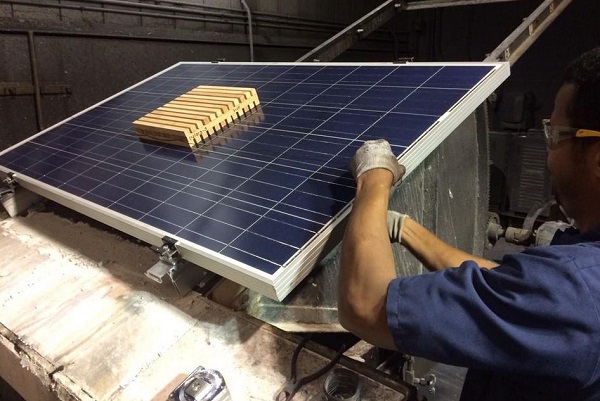 A soft iron wire, mandated by the standard, is used to secure the burning brand to the panel. Credit: Steven Bushong via twitter
A soft iron wire, mandated by the standard, is used to secure the burning brand to the panel. Credit: Steven Bushong via twitter
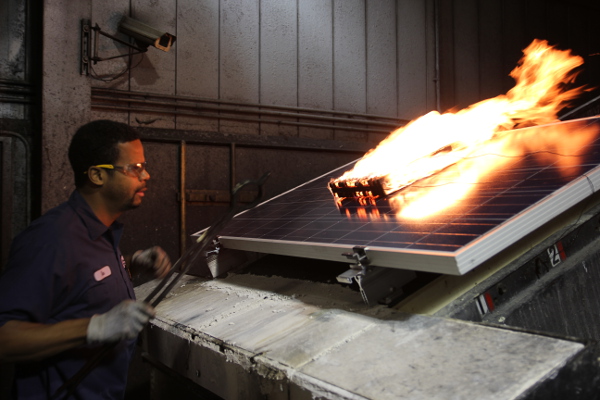 UL technician Demetrius Preston ensures that the placement of an A-class brand is in accordance with UL1703. Preston used a small grill to set the brand on fire. Holding the brand with tongs, he rotated it on the grill a specified number of times, exposing each side to flame until the brand met requirements. A soft iron wire is hung across the module to keep the brand in place. Credit: Steven Bushong
UL technician Demetrius Preston ensures that the placement of an A-class brand is in accordance with UL1703. Preston used a small grill to set the brand on fire. Holding the brand with tongs, he rotated it on the grill a specified number of times, exposing each side to flame until the brand met requirements. A soft iron wire is hung across the module to keep the brand in place. Credit: Steven Bushong
Senior project engineer Nathan Wang and other technicians installed the next roof deck, which included a solar PV system, mounted just the way it would be in the field. They placed the system at the prescribed distance from the edge of the roof deck. The system used rail-less mounting and a multi-crystalline panel.
The fire started again, burning at 1,400°F. A 12-mph wind fanned the flames.
The system showed no sign of damage until two minutes passed, when the module frame began to gather soot, and parts of the white backsheet turned brown. Five minutes in, fire touched the panel.
The question being answered was, “Does the solar array aid the fire?” In a nearby control room, with windows to watch the test, a technician carefully monitored the time and spread of flame, often referred to as “SOF.” Video cameras captured everything on film.
The construction of an array is important because seemingly minor details can change the course and intensity of flames, which are powered, in part, by the 12-mph breeze. If a mounting system and panel, in conjunction, channel flames in just the right way—or, more accurately, the wrong way—the fire could blast its way up to the top of the roof.
A PV system can restrict the flow of hot gases and confine flames close to the roof, not allowing them to dissipate as they would if there were no PV system.
That’s why significant changes in the design of a product require re-testing.
In the case of this system, the flames inched up the shingles just the way they did during the calibration test. Eventually, much of the panel backsheet burned and dissolved into ash. Overall, however, the panel and system stayed intact, did not contribute to the spread of flame and earned a Class A rating.
Burning brand
A brand is essentially many dried, rectangular pieces of wood, nailed together to make a porous block. Three sizes of brand are available: A, B and C. The fire rating being sought determines which size brand is used in a test.
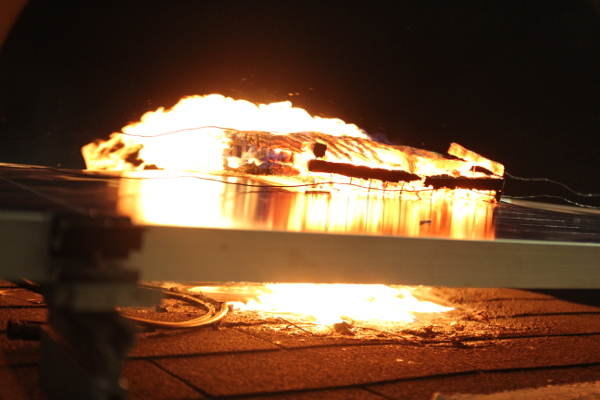 During a burning brand test, the brand often burns through the module and ignites roof decking. Performance of the module and roof deck together is evaluated. The critical criteria is whether the flame permeates the roof into the underlying construction. Credit: Steven Bushong
During a burning brand test, the brand often burns through the module and ignites roof decking. Performance of the module and roof deck together is evaluated. The critical criteria is whether the flame permeates the roof into the underlying construction. Credit: Steven Bushong
Technicians used a Class A brand—the biggest one, at 12 by 12 inches—in the demonstration I saw. The brand was set afire on all sides with a device that looked like a backyard grill before being placed on top of the PV system, where it will burn for 10 minutes.
A brand simulates burning debris, such as what a PV array could encounter if it were near a wildfire. The test addresses whether a system contributes to a brand penetrating a fire-rated roof and igniting construction materials in an attic, which are often highly flammable.
The question is, what is the reaction of the system to the fire?
The brand on top of the module turned the silicon cells a glowing orange, eventually melting the glass encasing and burning a smoldering hole through the panel. The brand dropped through the hole and onto the roof surface.
A video camera placed under the roof deck captured the following moments. If flames appeared, the test would be a failure. In the demonstration, the brand did not burn through the Class-A rated deck.
A second burning brand test put the fiery block under the panel, directly on top of the roof deck. This simulates ignited debris, which is a danger for roof-mounted arrays. To a casual observer, it may seem like this test is more about the roofing system than the solar array, but the altered air flow could impact the fire, adding energy, and flames could appear beneath the roof material.
Again, this combination of panel and mounting passed the test.
Not that complicated
While making sense of local building codes and how a solar system fits into them can be complicated, the science of fire and research has been translated into a straightforward test methodology. The tests are done to exact specifications, which have been deliberately written to address an obvious problem—the lack of system-level fire tests.
“Will a specific solar system help or hinder the resistance of a roof to fire?” Installers now have a way to answer this question, and the answer should be “no.”
Published with permission from an original publication on SolarPowerWorldOnline By Steven Bushong.




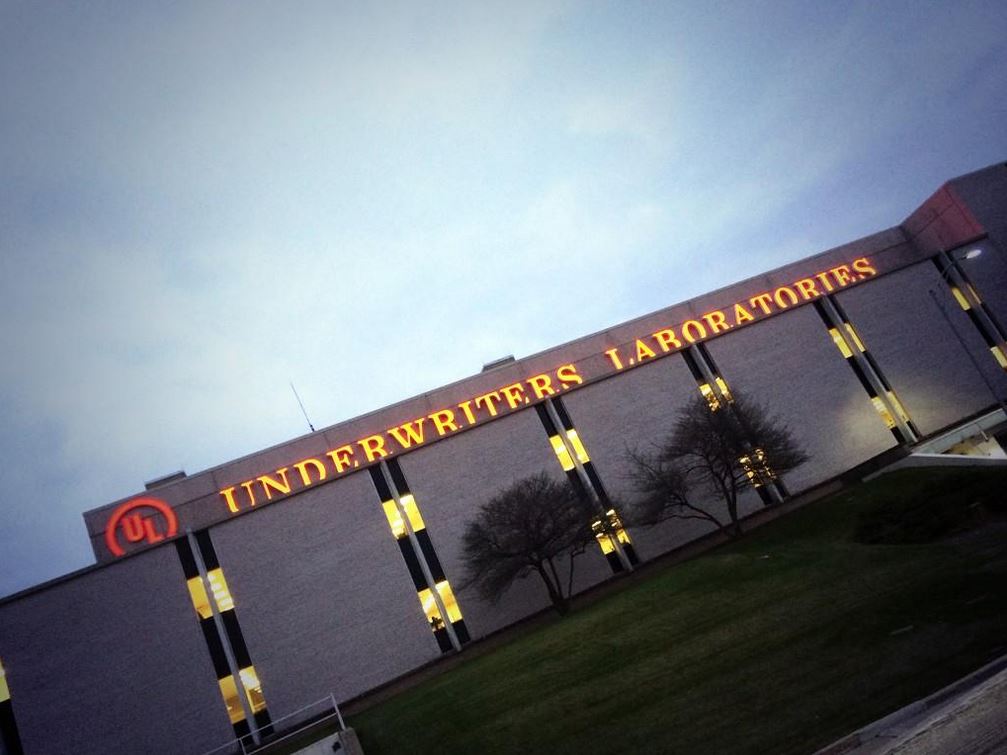








Comments